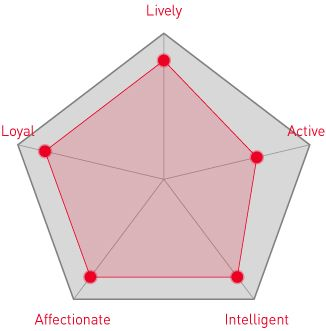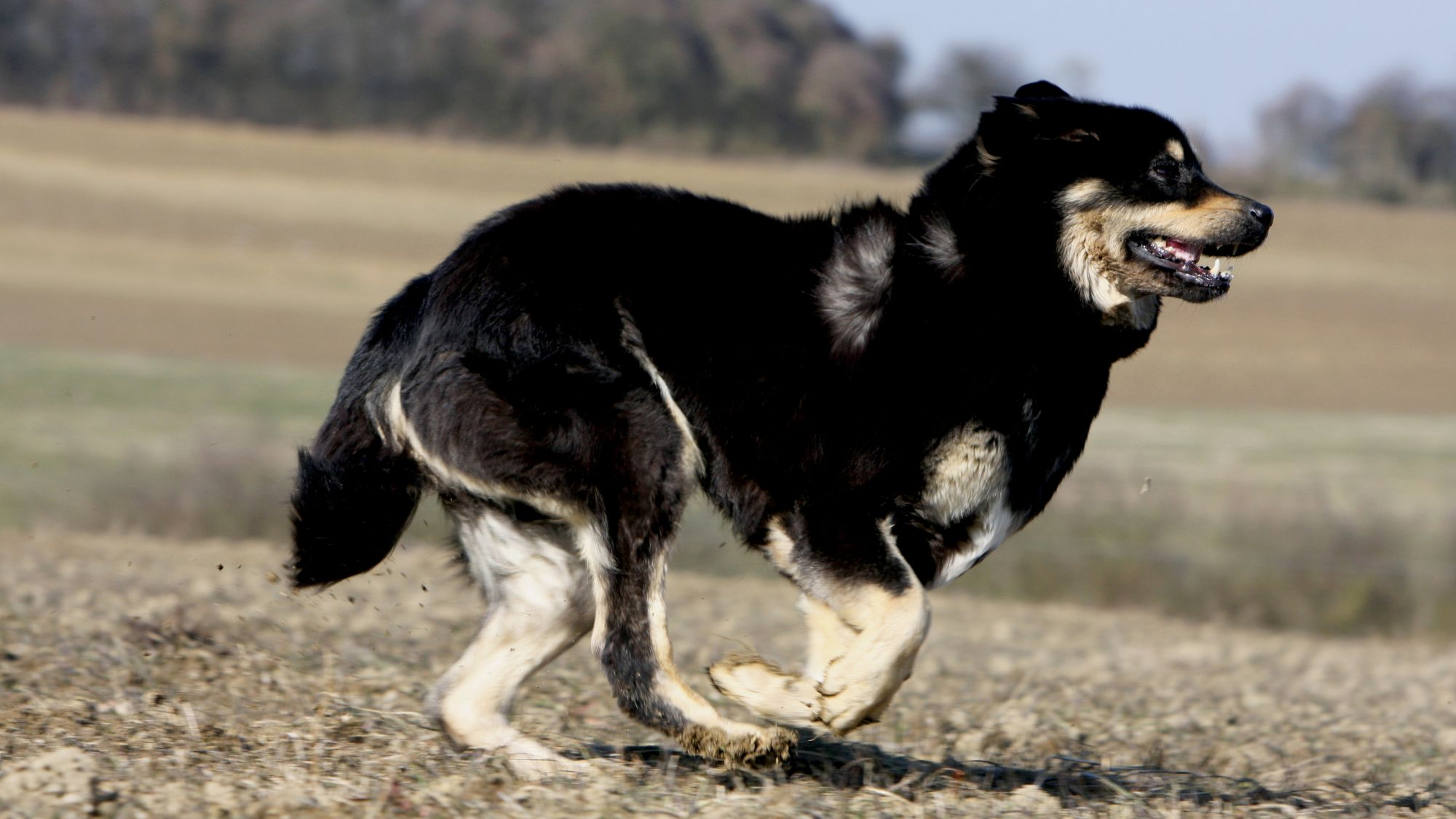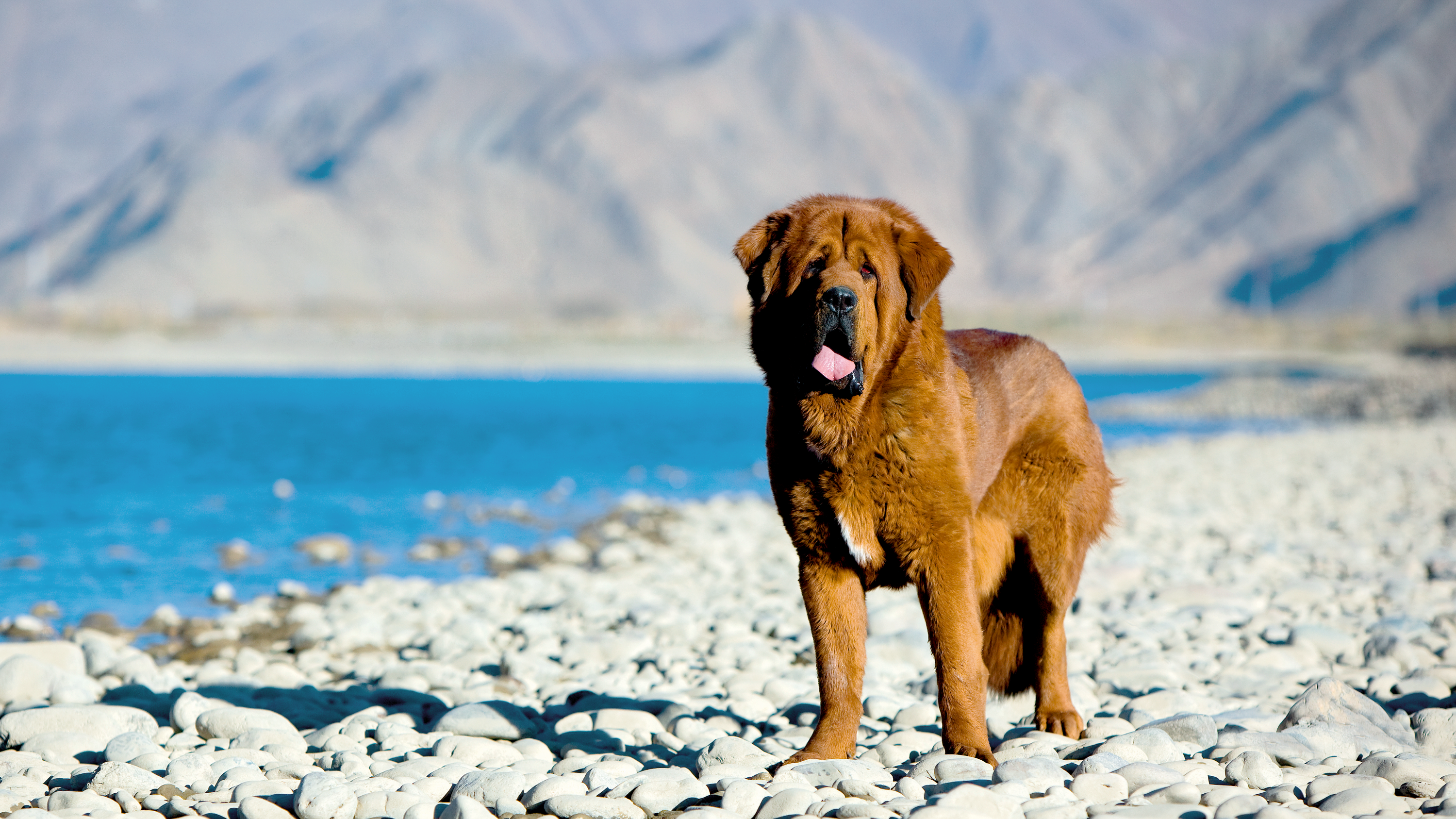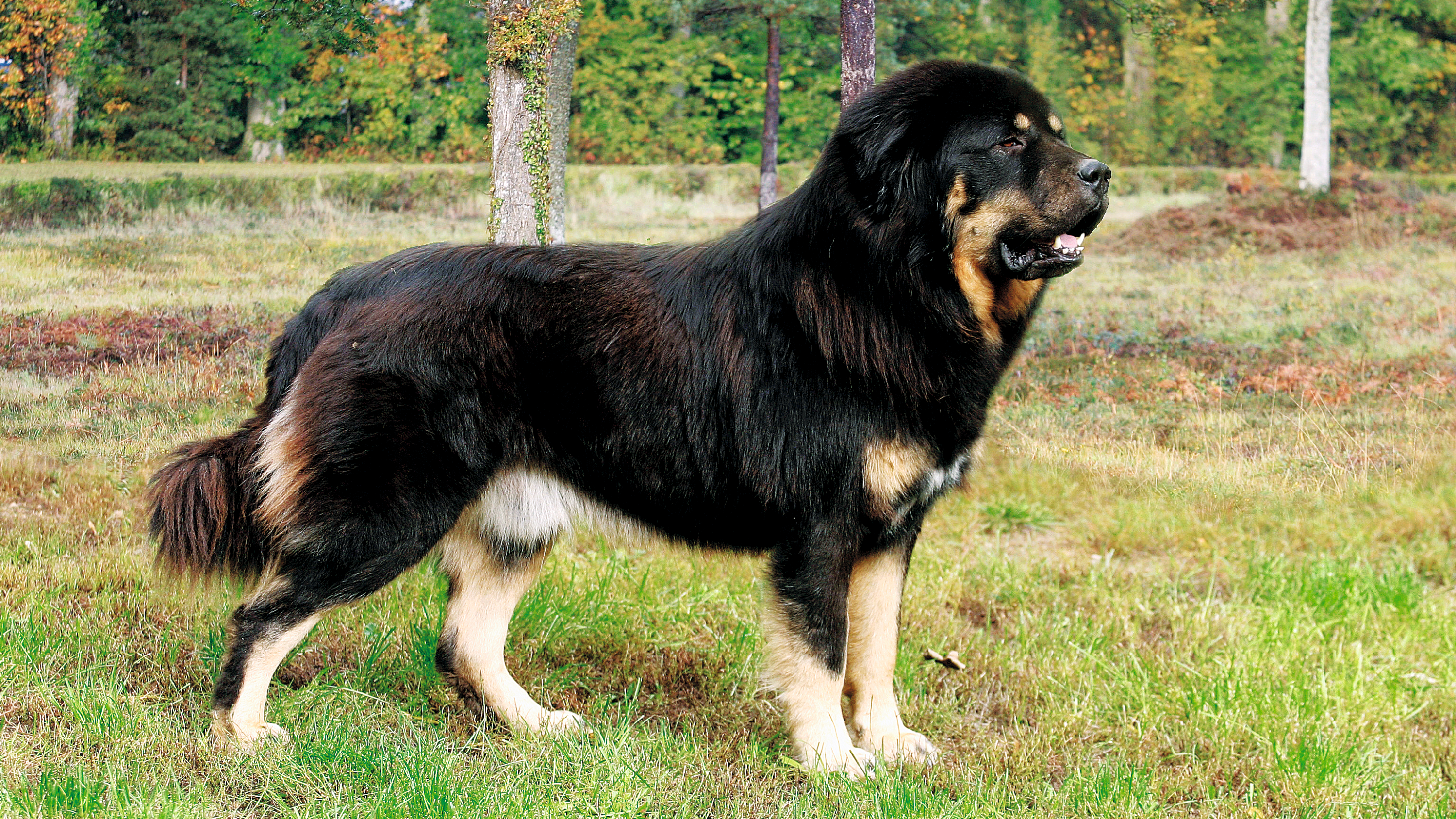
Let's talk Tibetan Mastiffs
Grand and glorious, the Tibetan Mastiff makes quite a statement with their flocculent coat and larger-than-life presence. A historic breed, they are said to be the grand poobah from which all Mastiffs descend. Classified as a giant breed but smaller than some, the Tibetan Mastiff is still a lot of dog to handle so not a great option for a first-time dog owner. Bred as guard dogs, they are dignified and protective. That said, they are a big mushball with those they know and once well-trained, a great companion and family dog.Official name: Tibetan Mastiff
Other names: None
Origins: Tibet

| Drooling tendencies: |
|
Warm weather? |  |
| Shedding level: |  |
Suited to apartment living? | |
| Energy level (high, low, medium) *: | High | Family Pet?* |
|
| Compatibility with other pets: | Can stay alone?* |
* We advise against leaving pets alone for long stretches. Companionship can prevent emotional distress and destructive behaviour. Speak to your veterinarian for recommendations.
Every pet is different, even within a breed; this snapshot of this breed’s specifics should be taken as an indication.
For a happy, healthy and well-behaved pet, we recommend educating and socialising your pet as well as covering their basic welfare, social and behavioural needs.
Pets should never be left unsupervised with a child.
All domestic pets are sociable and prefer company. However, they can be taught to cope with solitude from an early age. Seek the advice of your veterinarian or trainer to help you do this.


| Baby age: | Birth to 2 months |
| Puppy age: | 2 to 8 months |
| Adult age: | 8 months to 2 years |
| Mature age: | 2 to 5 years |
| Senior age: | From 5 years |

1/7
Get to know the Tibetan Mastiff
All you need to know about the breed
The American Kennel Club calls the Tibetan Mastiff “the ancient grandfather of all Mastiffs,” such is the legacy of this storied dog. They’ve existed for centuries, firmly instilling their instinctual confidence. The Tibetan Mastiff has great reverence for their owners, and will thrive on the same in return.
A very intelligent breed, they take direction but may not heed commands terribly well given their independence. And don’t think there’s aggression underneath that plush covering: The Tibetan Mastiff is a softie, patient and affectionate toward those they know. If newcomers are introduced by trusted humans, the Tibetan Mastiff may be aloof but will warm up soon enough.
Known as loyal, the breed puts family first. They do well with children once trained – even better if raised with them – but may find their frolicking threatening rather than fun. Centuries as a guard dog have made this majestic breed wary of behaviour that seems out of place, at least when it comes to canine standards.
The yard is one of the Tibetan Mastiff’s favourite places, but install a very high fence there. The breed has been known to climb higher than owners might think. Despite their bulk, this is an athletic dog, able to run fast, after would-be intruders and a ball with equal measure.

2/7
2 facts about Tibetan Mastiffs
1. Change is good
Breeds like the Tibetan Mastiff have been raised to protect and serve, but something as simple as a walk could kick in that need too strongly. Varying the route of the daily stroll is a good idea to keep your Tibetan Mastiff from acting as though they own the neighbourhood. The instinctive trait to dominate at times can be simply solved by taking the road less traveled, a healthy alternative all around.
2. Reaching their potential
Often, giant breeds like the Tibetan Mastiff are slow to develop and reach full maturity. Males reach full maturity between four and five years of age, and females between three and four. This means your Tibetan Mastiff will have puppy-like behaviour while they grow into a very large animal. Little ones should be watched in order to avoid undue harm. Young dogs can also be, dare we say, stubborn? So training your Tibetan Mastiff should be a part of their upbringing for the length of their life.
History of the breed
Few breeds can be traced to antiquity, but such is the path of the Tibetan Mastiff. This massive canine hails from Tibet, developed in the Himalayas as a flock guardian and guardian of Tibetan monasteries. Villages and nomads found comfort in their companionship and guardianship. Skeletal remains from China put the dog’s ancestors in the Stone and Bronze Ages; other ancestors were found there around 5,000 years ago. It’s thought most modern working breeds descend from the Tibetan Mastiff.
In 1847, two Tibetan Mastiffs were given as a gift to Queen Victoria. England’s Kennel Club was formed in 1873 and the breed was entered. The dog flourished in England with the Tibetan Mastiff Breed Club formed in 1931.
In the late 1950s, two of the dogs were also given as gifts to President Eisenhower and the Tibetan Mastiff Club was founded in the U.S. in 1974.
The breed was recognised by the United Kennel Club in 1998 and the American Kennel Club in 2006.

4/7
From head to tail
Physical characteristics of Tibetan Mastiffs
1. Ears
Medium-sized, v-shaped ears, set high, hanging forward.
2. Coat
Extremely thick double coat, coarse topcoat, wooly undercoat.
3. Body
Hulking body, very athletic, marked by a broad head.

5/7
Things to look out for
From specific breed traits to a general health overview, here are some interesting facts about your Tibetan Mastiff

6/7
Caring for your Tibetan Mastiff
Grooming, training and exercise tips
With a coarse, thick double outer coat and a woolly undercoat, one would think grooming the Tibetan Mastiff a chore. It’s actually low maintenance, given the fur’s agreeable texture. Utilise a long pin brush to remove dirt best. The breed will completely shed their undercoat in late spring. Switch to a de-shedding tool then to handle the onslaught. Brush teeth regularly and trim their nails too to prevent joint issues, though for the best joint health, make sure to keep them exercised and in good shape. Although surprisingly agile, the Tibetan Mastiff prefers low-key exercise to frisbee-catching, and in the morning or at night, with daytime best reserved for nap time. Training the noble Tibetan Mastiff is a pleasure: They’re highly intelligent and learn fast, so don’t need much in the way of repetition. To note though: The breed may ignore commands, responding on their own terms. Treat them with dignity and they will respond in kind. This is a dog who respects their owner’s judgement and responds well in return.7/7
All about Tibetan Mastiffs
Giant breeds are a wonder of physical engineering, some weighing more than the average person. Although not the largest dog in the world, the Tibetan Mastiff ranks up there when it comes to height, an average 25 inches (63.5cm) and heft, at an average 125lbs (57kg). First place for biggest dog is held by the Tibetan Mastiff’s distant cousin, the Mastiff, some of whom can weigh up to 230 pounds (104kg)!
The admirable traits of the Tibetan Mastiff are many but as a giant breed, potential owners should give a good amount of thought to having them as a pet. They’re intelligent and independent but simply put, can be a lot to handle, with a hulking size and capacity for drool that’s enough to throw even the savviest dog owner. Train your Tibetan Mastiff with someone who knows the breed well and you – and your dog – will benefit in spades.
translations.feature.breeds.otherbreeds
Read more on this topic

How your dog's nutrition needs change with age

How to adopt a dog

Things to consider before getting a dog
Sources
1 - Veterinary Centers of America https://vcahospitals.com/
2 - Royal Canin Dog Encyclopaedia. Ed 2010 and 2020
3 - Banfield Pet Hospital https://www.banfield.com/
4 - Royal Canin BHN Product Book
5 - American Kennel Club https://www.akc.org/


